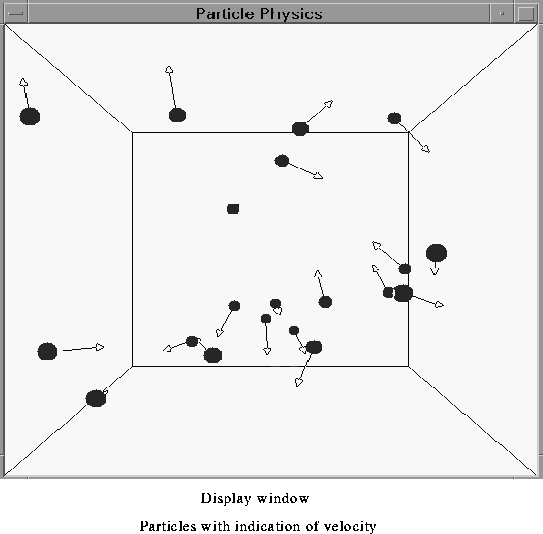
\xe3 Particles" is an application developed with the COLOS development tool XDEV. It was originally designed as a testbed for XDEV and also as an example for the use of that authoring system.
This application was originally developed in 2-dimensions and it is now also implemented in 3-dimensions. It takes many ideas from the \xe3 xyZET" application from Kiel.
With this application, an introduction to the basic concepts can be made, which hides much of the mathematical load usually involved when teaching those concepts. The graphical animation also allows a deeper understanding of those concepts, preparing the student for a much easier introduction to the mathematics behind the formal approach. The behaviour of complex systems, difficult to be dealt with in terms of an analytical approach, can also be shown.
The application shows two different panels. The first presents the simulation, the second is used as control panel where the user interactively defines the kind of interactions or external fields acting on the particles. The velocities and accelerations for all the particles can be graphically displayed.
The particles are mouse sensitive for moving and changing of velocity. A strip-chart recorder has been implemented to show different quantities (energies, positions), allowing the students to link the visualization on the screen to standard graphical representations found in text books.
A numerical finite difference algorithm has been implemented to integrate Newton's second law: The force on a particle is first computed in terms of the present interactions and external fields. Then the new velocity is computed in terms of the acceleration and old velocity. Now the new position is computed in terms of the velocity and old position. This process is iteratively applied to all particles.
With a high powered workstation, the number of particles that can be involved in a simulation with no appreciable loss of speed is around 100. This is enough to get an idea of the behaviour of complex systems. For instance, the electrostatic behaviour of a conductor with fixed positive ions and free moving electrons can be easily shown.
No additional helps, besides a self-explanatory user interface design has been implemented.
It will be used during the present university course (introductory level), as support for teaching basic concepts in mechanics: velocity, acceleration, momentum and energy conservation. This will be done in combination with the Electronic Book application.